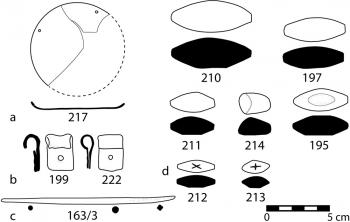American Journal of Archaeology | The Journal of the Archaeological Institute of America
You are here
Merchants and Mercantile Society on Late Bronze Age Cyprus
July 2023 (127.3)
Merchants and Mercantile Society on Late Bronze Age Cyprus
In this study, we examine the emergence and role of merchants and mercantile society on Late Bronze Age Cyprus. We present various site features that reflect the presence or daily practices of merchants, and we consider objects such as weights, scales, seals, and writing implements, discussing how these may signal links to merchants or mercantile practices. We evaluate the relevant data within two different frameworks: elite conflict and class conflict. Cypriot elites played a fundamental role in establishing the politicoeconomic organization of copper production, and it has been argued that Late Bronze Age Cyprus was made up of autonomous regional polities, with an implicit role for elite conflict. We also assess whether a newly formed merchant class may have come into conflict with the existing elite. We argue that a new economic class—that of the merchant—was in the process of formation throughout the Late Cypriot period (ca. 1650–1100 BCE). Whether this mercantile class emerged from the existing (landed) elite or was constituted by newly powerful actors within Cypriot society, or some combination of the two, forms a key point of discussion.
Merchants and Mercantile Society on Late Bronze Age Cyprus
By A. Bernard Knapp and Nathan Meyer
American Journal of Archaeology Vol. 127, No. 3 (July 2023), pp. 309–338
DOI: 10.1086/724597
© 2023 Archaeological Institute of America


